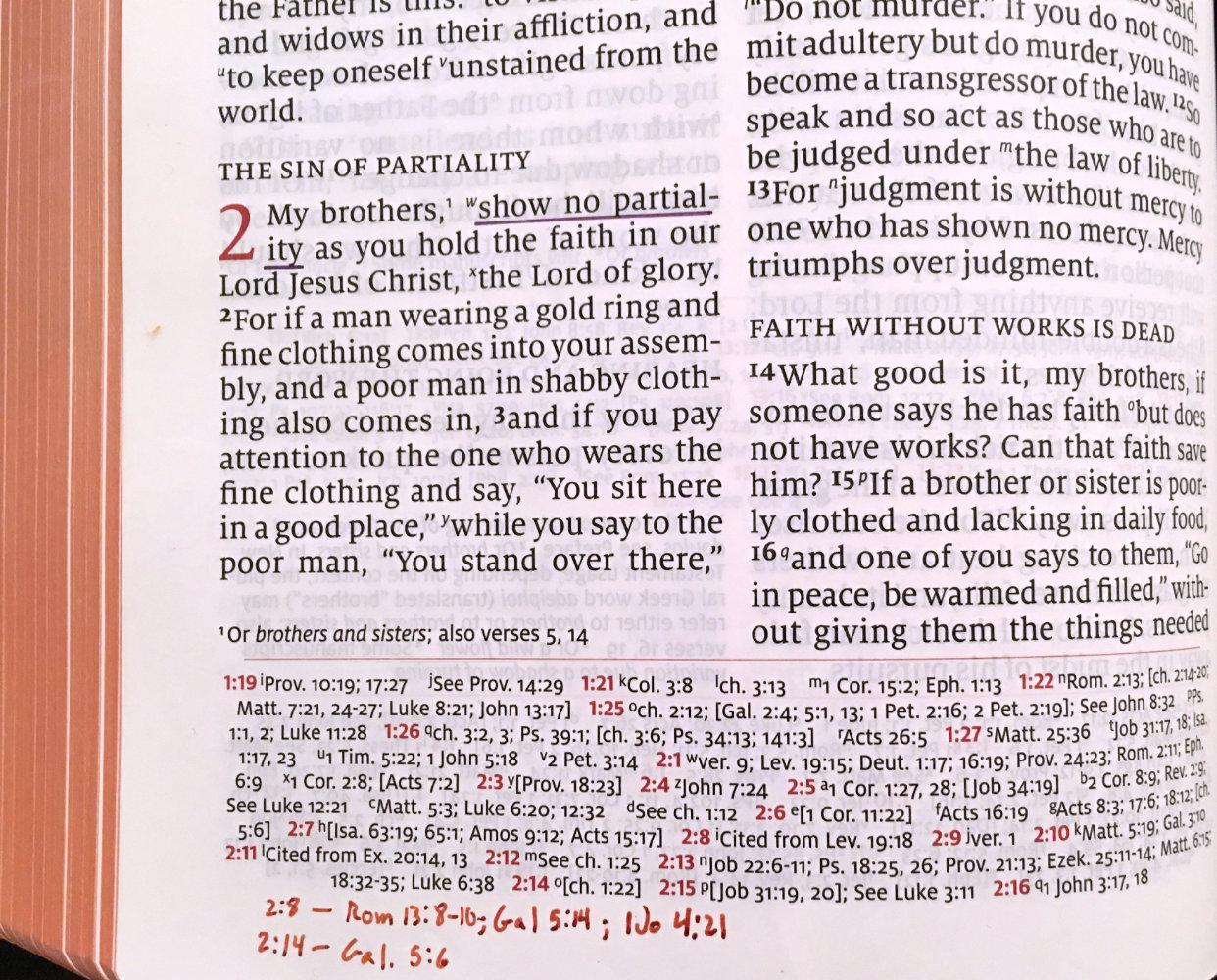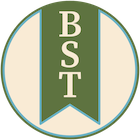Have you ever wondered what those verse references are that appear to the side or beneath your Bible text? Those lists of Bible verses are called cross-references. They help you find passages related to the one you’re currently studying.
If you let them, cross-references can be your best friend in Bible study.
Today we’re taking a crash course in cross-references. I will show you the in’s & out’s of using them in Bible study.
What is a Cross-Reference?
At its simplest, a cross-reference is a marker in the text pointing the reader to related content. When speaking of the Bible, cross-references point you to passages containing related words and themes.
Why Cross-References?
Though there are many ways to study the Bible, interpretation is best when we let the context of passages speak for themselves. Some refer to this as “using Scripture to interpret Scripture.” We use a similar phrase: using cross-references.
Cross-references are a study tool used to point the reader to related content which may define and contextualize what you’re reading. For example, when studying a difficult passage, utilizing a cross-reference resource will point you to associated passages—many times relating to the topic you are reading, and sometimes similar situations across the Biblical timeline.
The Bible is better at interpreting a passage than any commentary you can read.
When it comes to the value of cross-references, the New Treasury of Scripture Knowledge says the following:
… this is the way which the Savior Himself studied and discussed Scripture (Luke 24:27,44; John 1:45; 5:39). It is the way which the apostle Paul used to expound and explain the Bible (Acts 17:2,3). Reflections of this method of studying Scripture can be seen in the way the apostle Paul quotes a series of texts of Scripture in his epistles (see especially Romans 3:9-18). So while there are many other valuable methods of Bible study, the method of comparing Scripture with Scripture … is certainly a valid, if not the best, method of Bible study.[*]
Cross-references should always be the first tool you consult when studying Scripture. When you let Scripture speak for itself it does a remarkable job.
The Bible is better at interpreting a passage than any commentary you can read. Share on XTypes of Cross-References
If you’re going to make use of cross-references in your study, you need to know about the different types and how to use them. For our purposes today, we’re going to utilize the ESV cross-reference system and explain its setup. To learn about the cross-references for your Bible translation consult its front matter.
The ESV’s system identifies six different types of cross-references.
1. References to Specific Words or Phrases
This is the most common type of reference. As the title suggests, these references point you to similar words or phrases, whether they be in the same chapter (ver. 7), the same book (ch. 1:3), or in a different book of the Bible (Heb. 11:2).
2. Comparative References
These are thematic references, pointing to the same or a similar theme elsewhere in Scripture. The ESV these references with brackets like “[2 Tim. 2:13].”
3. References to Collections of References
Instead of repeating a long list of related verses already recorded elsewhere, the ESV provides a reference to this list’s location. These are denoted by the word “See” in the ESV, such as “See John 8:26.” In the cross-references for John 8:26 you will find the list of related verses.
4. References to Longer Parallel Passages
Long passages closely paralleling one another also have their own indicator. Such references are identified by the phrase “For …, see …” For example, you will find the reference “For ver. 1-15, see Mark 4:1-12; Luke 8:4-10” in Matthew’s gospel for the parable of the sower.
5. Less Direct References
The “See” referent is also used for passages that share a related theme, but its reference passage is longer. Proverbs 3:33 speaks of the Lord’s curse being on the house of the wicked. Its cross-reference contains the text “See Lev. 26:14-39,” which contains a fuller explanation of what the saying means.
6. Quoted References
The last type of cross-reference in the ESV indicates when another passage is quoted. If quoted elsewhere in the Bible, those passages are listed. The location to the original text is also included, such as “Cited from Ps. 51:4.” Sometimes when the quotation is clearer in the original language the cross-reference will include “(Heb.)” or “(Gk.)” indicating that the reference is most clear in that language.
Note: Unlike the text of the Bible, cross-references are not perfect and without error. These were put in place by publishers and are accurate in so far as the publisher was able to check them. Some cross-references may lean one way or another on doctrinal/theological issues. As with any biblical tool, be aware of its limitations.
How I Use Cross-References
Now that we’ve covered the different types of cross-references, let’s talk about using them in your studies.
While it might seem like a complicated system at first glance, in practice their use is straightforward. Here are the steps I follow when studying a passage.
- Read the Passage. Focus only on the text at hand. Read and re-read the passage. The goal is to let the passage unravel itself without any outside help. As you go, write any observations you find in a notebook.
- Look Up Cross-References. Before you consult a Study Bible or commentaries, first turn to your cross-references. Look up each passage one-by-one, reading it within its full context when necessary. Note the cross-references that stood out or were helpful in explaining the passage.
- Look Up Your Cross-References’ Cross-References. This is where the real fun begins. Because cross-references are all over the Bible, the verses you just looked up will have cross-references also. The next step is to look up those cross-references. Continue this process as time allows or until you’re satisfied with your understanding of the passage or theme.
- Consult Your Other Tools. Finally, once you’ve exhausted your cross-references, turn to your other tools when you need further assistance. Or, if you are confident in your work, use these tools to make sure you correctly understood the passage.
This is how I read my Bible most mornings. I sit at my desk with nothing more than my Bible and a notebook. I’ll read the passage, follow the steps above, and then write down my findings and any application from that day’s reading.
Keep your study simple. Only use other tools when necessary.
Bonus Tips
As we wrap up, here are a couple bonus tips for you.
The more you read the Bible, the more familiar it becomes. When this happens, sometimes you will read a passage and another will come to mind that’s related. Most times, when you glance at your cross-references it’ll be there. If it is, fantastic, your Bible knowledge is growing! But, on the rare occasion, it won’t be in your list of cross-references.
What do you do if the verse in your head isn’t listed? Here’s what you do: grab your pen and write it in the margin! That’s what I do when I’m studying (see the picture below). Just make sure the passage fits the context & the reference is correct before writing it down.
Missing a cross reference? No problem! Grab your pen and write it in the margin! Share on X
If you want to dig even deeper, add a resource like the New Treasury of Scripture Knowledge (which I quoted from above) to your library. It’s an in-exhaustive collection of cross-references. This resource is like putting your cross-references on steroids. When I’m preparing sermons or studies, it’s a go-to resource.
Put It to Use
Now it’s your turn. Your challenge this week is to use nothing more than your Bible and its cross-references in your studies. Use the steps outlined above, and only consult other tools as a last resort.
See where the cross-references take you and let me know about it!
[*] Jerome H. Smith, The New Treasury of Scripture Knowledge: The Most Complete Listing of Cross References Available Anywhere- Every Verse, Every Theme, Every Important Word (Nashville TN: Thomas Nelson, 1992).
Free Bible Study eBook
Click the button below to get a free copy of our "Bible Study Blitz" ebook that will give you 5 tips to enhance your Bible study.





